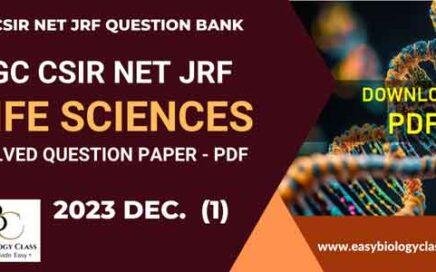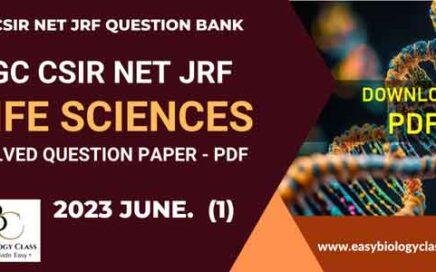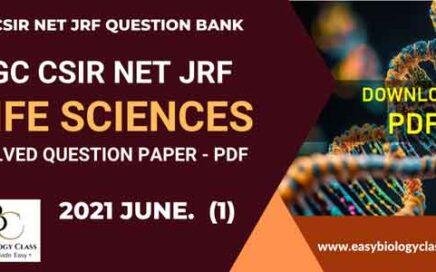
UGC NET Life Sciences 2023 December Solved Question Paper (Shift-1)
UGC NET Life Scienes Solved Paper (2023 Dec. Shift-1): Original / Official Solved Question Paper of NTA CSIR JRF NET Life Sciences (Junior Research Fellowship […]

UGC NET Life Scienes Solved Paper (2023 Dec. Shift-1): Original / Official Solved Question Paper of NTA CSIR JRF NET Life Sciences (Junior Research Fellowship […]

Original / Official Solved Question Paper of NTA CSIR JRF NET Life Sciences (Junior Research Fellowship / National Eligibility Test) Examination December 2023 (Shift-2) with […]

Original / Official Solved Question Paper of NTA CSIR JRF NET Life Sciences (Junior Research Fellowship / National Eligibility Test) Examination June 2023 (Shift-1) with […]

Original / Official Solved Question Paper of NTA CSIR JRF NET Life Sciences (Junior Research Fellowship / National Eligibility Test) Examination June 2023 (Shift-2) with […]

Original / Official Solved Question Paper of NTA CSIR JRF NET Life Sciences (Junior Research Fellowship / National Eligibility Test) Examination February 2022 (Shift-1) with […]

Original / Official Solved Question Paper of NTA CSIR JRF NET Life Sciences (Junior Research Fellowship / National Eligibility Test) Examination February 2022 (Shift-2) with […]

Original / Official Solved Question Paper of NTA CSIR JRF NET Life Sciences (Junior Research Fellowship / National Eligibility Test) Examination February 2021 with Answer […]

Original / Official Solved Question Paper of NTA CSIR JRF NET Life Sciences (Junior Research Fellowship / National Eligibility Test) Examination September 2022 with Answer […]

Original / Official Solved Question Paper of NTA CSIR JRF NET Life Sciences (Junior Research Fellowship / National Eligibility Test) Examination June 2021 with Answer […]